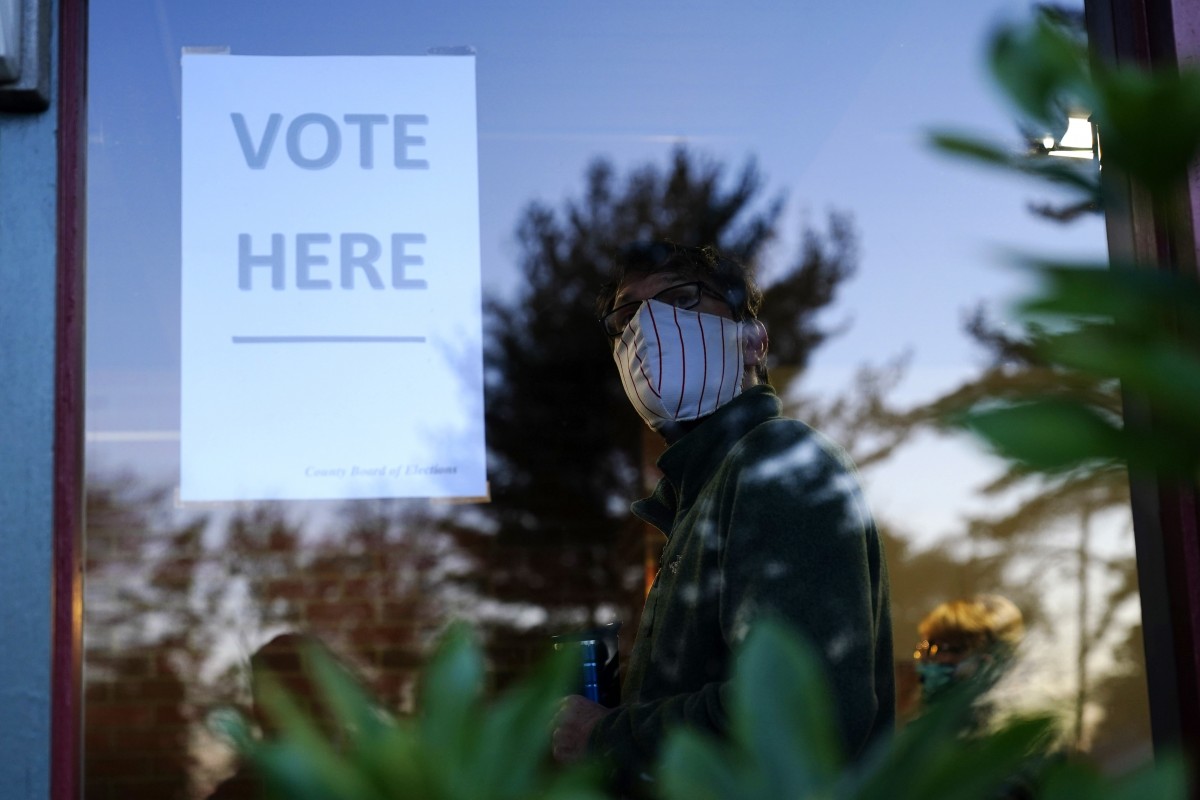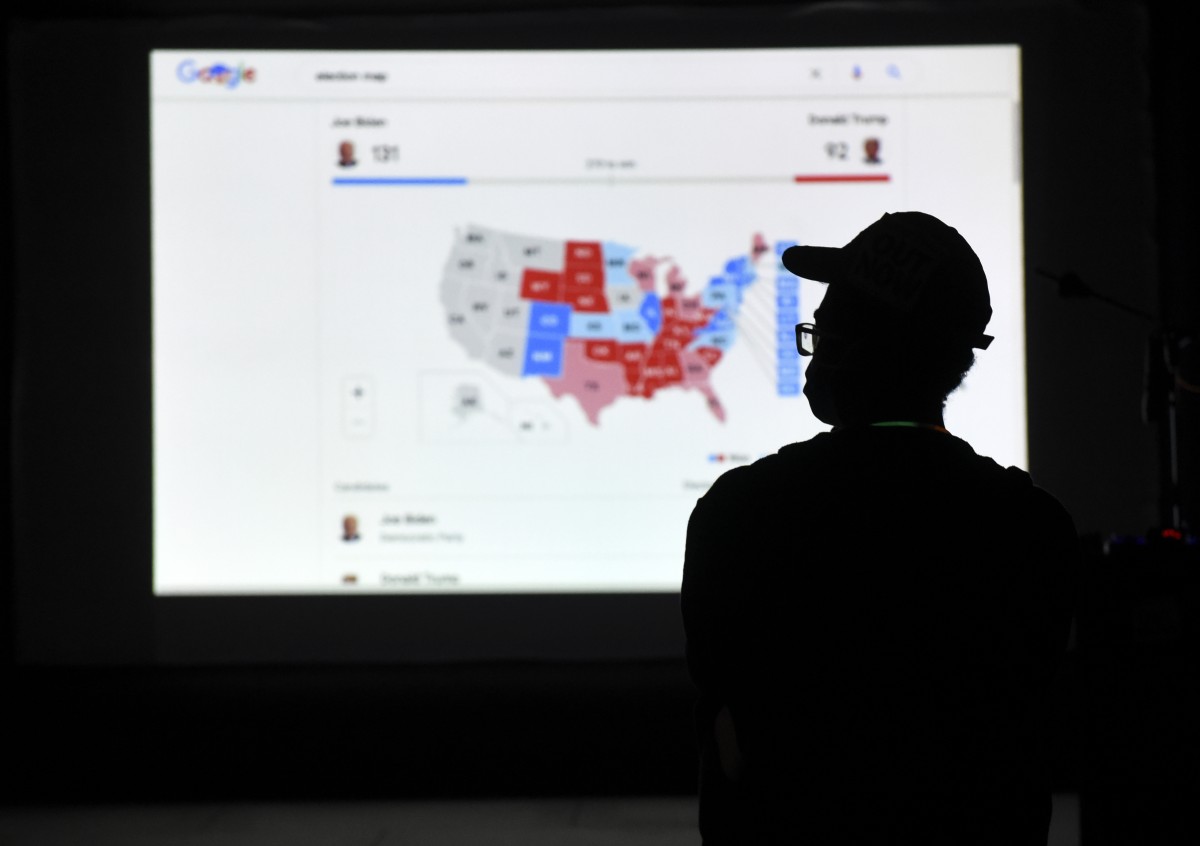President Donald Trump prematurely, and falsely, said early Wednesday that he won re-election for president, and called for the counting of ballots in the United States to cease.
“This is a fraud on the American public. This is an embarrassment to our country,” Trump said in remarks from the East Room of the White House. “We were getting ready to win this election. Frankly, we did win this election.”
He said the campaign would go to the Supreme Court, without offering specifics about a theoretical case. “We want all voting to stop. We don’t want them to find any ballots at 4 o’clock in the morning and add them to the list, okay? It’s a very sad moment. … And we will win this. And as far as I’m concerned, we already have won it.”
Ballots are routinely counted after Election Day for a number of different reasons, in states controlled by both Republicans and Democrats. Despite Trump’s remarks, the counting of legal ballots continues across the country, not just in states that remain too close to call.
States under no legal requirement to report full results on Election Night
Federal law allows states more than a month after the election to finalize results. Electoral votes are not cast until Dec. 14, and Congress officially counts them on Jan. 6.
“There are no official results on Election Night — there never have been,” said Edward B. Foley, an Ohio State University constitutional law professor who specializes in elections. “Election Night tallies are always just preliminary, pending certification of the (checking) of returns under state law, which takes time. Every state has a law on this point.”
Having a clear winner by midnight on Election Night historically requires a wide margin of victory. The presidential winner wasn’t known before midnight in 1960, 1968, 1976, 2000, 2004 and 2016, historian Michael Beschloss tweeted.
One of the consequences of the flood of mail ballots — a byproduct of the pandemic — is that they take longer to count. Ballots that aren’t filled out in person at a polling place require extra steps to verify a voter’s identity, such as comparing signatures to prevent both voter fraud and double counting.
The increase in mail balloting isn’t the only factor preventing a full accounting of all votes shortly after the polls close. There are at least two categories of ballots that, according to state law, are certain to be counted after Election Night in any election year.
One involves ballots from service members stationed overseas. In that case, many states allow a grace period for ballots mailed back to the mainland. For instance, states like Georgia and Nevada require a postmark, but not receipt, by Nov. 3. Neither state had declared a winner at the time of Trump’s speech.
The other involves provisional ballots, which are ballots cast when a voter’s eligibility is in question. If election officials resolve those questions, the ballot is counted, but the checking and counting process takes time.
Why Trump is declaring victory
Trump’s path to an Electoral College victory appears to ride on winning a combination of Wisconsin, Michigan, Pennsylvania, North Carolina and Georgia, five states he carried in 2016.
At the time of Trump’s remarks, which began at 2:21 a.m. Eastern Time Wednesday, he led in the raw vote count in each of those five states.
But not all the votes have been counted in those states, and absentee and mail-in ballots from urban areas likely to support Biden are among those yet to be counted.
The situation in Pennsylvania, Wisconsin, Michigan and Georgia
At the time Trump spoke, significant numbers of ballots remained to be counted in the Democratic strongholds of Pennsylvania such as Philadelphia, the Philadelphia suburbs and Pittsburgh. In Milwaukee and Detroit, a significant portion of votes remained to be counted. Trump’s lead in Georgia — like the three others, a state Trump won in 2016 — had also narrowed with Biden making gains around Atlanta.
Lead switching between the candidates in any given state is not a sign of something amiss.
A candidate’s lead doesn’t translate into a state being “called” for him
Media organizations, primarily television networks and the Associated Press, have “decision desks” that determine when enough results are available to allow them to “call” a race. No decision desk recommends a call when the race is close or when just a fraction of the total has been reported.
“We want to be 99.5 percent sure before we project a race,” John Lapinski, director of the NBC News elections unit, told PolitiFact.
That’s especially true this year when network number-crunchers are well aware that ballots cast by mail might have very different patterns of results than ballots cast in person.
States that are rated as “too early to call” or “too close to call” by media organizations can’t be tentatively chalked up as a win for either candidate. And that’s where credible media outlets’ decision desks are currently ranking Wisconsin, Michigan and Pennsylvania, as well as a few other states, including Georgia.
Designating states as too close to call is done specifically to avoid giving a candidate a premature lead in the race.
No mainstream media organization, including conservative-friendly Fox News, or even conservative outlets like Newsmax or OANN, had projected Trump as the electoral college winner at the time of his remarks
Our ruling
Trump said, “As far as I’m concerned, we already have won” the 2020 presidential election. At another point, he said, “frankly, we did win this election.”
It is possible that Trump will win re-election. But his White House speech in the early morning hours of Nov. 4 wasn’t a prediction. It was a premature and false declaration based on incomplete information about the vote counts in a number of states.
The U.S. election system allows states more than a month to count legally cast ballots. No credible organization had reported that Trump won when he made his speech.
Trump’s statement is wrong and ignores the process by which the United States casts and counts votes. We rate it Pants on Fire.
This article was originally published by PolitiFact. See the sources for this fact-check.



